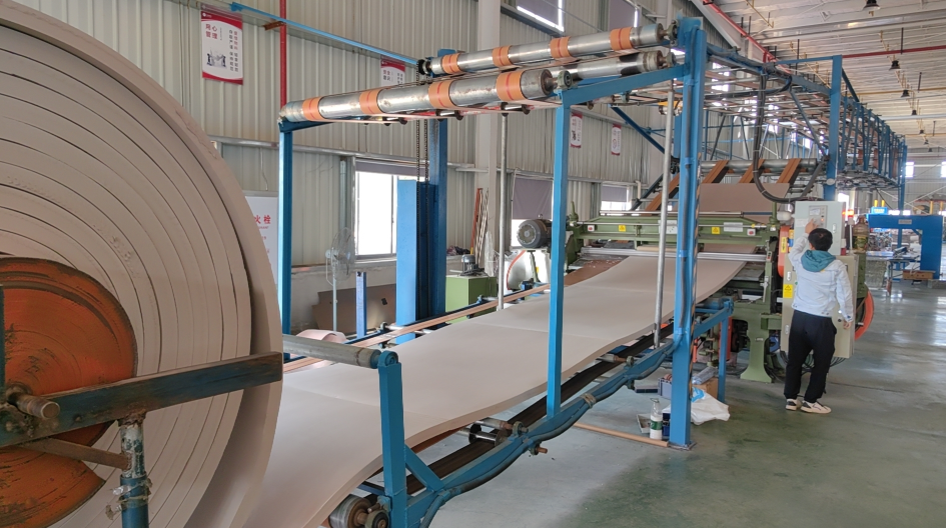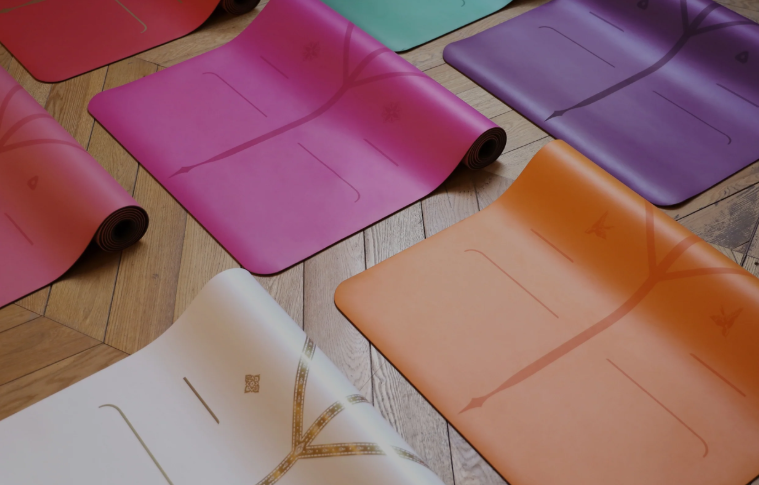If you’re choosing a custom yoga mat, you’ll mainly find two types: foam and rubber. From my experience, each material has its own benefits. They work well for different people and yoga styles.
Brief Overview: Foam vs Rubber – Most Common Materials for Custom Mats
Foam yoga mats are lightweight and provide great cushioning. I suggest them if comfort is your top priority. This makes them great for beginners or anyone with sensitive joints. Prices for foam mats can range from $10 to $50, based on the mat’s thickness and brand.
Rubber yoga mats offer fantastic grip and last a long time. I find that experienced yogis who need more stability in their poses prefer them. These mats cost between $30 and $100, which reflects how long they last and how well they perform.
I created this guide to help a few different groups: – Yoga studios that want to buy high-quality yoga mats for their clients. – Retailers who want to add popular yoga mats to their product line. – Brand owners who want to make Custom Yoga Mats to improve their brand’s look. – Anyone looking for the right yoga mat for their personal yoga practice.
What Is a Foam Yoga Mat?
From my experience, foam yoga mats are all about comfort during practice. They are lightweight, which makes them very easy to transport. Their soft cushioning gives your body excellent support. I think these mats are a great choice for beginners or people with sensitive joints. They do a good job of absorbing impact and reducing strain.

Cost and Value
You can expect foam yoga mat prices to be between $10 and $50. The final cost depends on things like the mat’s thickness and brand. If comfort is a top priority for you, I think it’s a worthwhile investment.
Other Features of Foam Yoga Mats
- Common materials: TPE, EVA, NBR
- Key features: lightweight, cushioned, budget-friendly
- Customization options: color, thickness, logo printing
I suggest a foam mat if you want comfort and are new to yoga.
What Is a Rubber Yoga Mat?
From my experience, rubber yoga mats offer amazing grip and are very tough. They give you a stable base for your poses. This is why many experienced yogis like them. If performance is a top goal for your yoga practice, I recommend you try a rubber mat.

Cost and Value
You can expect to pay between $30 and $100 for a rubber yoga mat. The price is different based on the quality and the brand. They last a long time and perform well. I think this makes the cost worthwhile if you practice yoga regularly.
Other Features of Rubber Yoga Mats
- Common materials: You’ll find them made from natural rubber or synthetic rubber.
- Key features: They have a great grip, are good for the planet, and are built to be heavy-duty.
- Customization options: You can customize them with laser engraving, screen printing, or full-color digital printing.
I suggest a rubber mat if you want a stable and durable surface for your yoga sessions.
Side-by-Side Comparison: Foam vs Rubber
If you’re choosing between a foam and a rubber yoga mat, it helps to know how they differ. From my experience, each mat type works well for different kinds of yoga practice and people.
Comparing Comfort and Support
Foam Mats: I like foam mats for their light weight and soft cushion. They provide a lot of comfort. I recommend them for beginners or anyone with sensitive joints. Their soft surface is great for absorbing impact and reducing strain.
Rubber Mats: Rubber mats are firmer than foam, but they give you plenty of support. I find their stability is a huge plus for experienced yogis. You get a solid base for holding difficult poses.
How Long They Last and Care
Foam Mats: Foam mats are easy on the wallet. The trade-off is that they wear out faster. I’ve noticed you often need to replace them sooner than a rubber mat.
Rubber Mats: These mats are built to last a long time. They are very durable and resist wear and tear. I think they are a smart investment if you practice yoga regularly.
Grip and Performance
Foam Mats: The grip on foam mats can be different depending on the type of foam. Most of them offer a decent amount of traction. In my experience, they can get slippery if you’re sweating a lot.
Rubber Mats: I love the fantastic grip on rubber mats. This makes them a great choice for hot yoga classes. They help you stay stable and stop you from slipping, which improves your practice.
Price and Value Consideration
| Feature | Foam Mats | Rubber Mats |
|---|---|---|
| Weight | Lightweight | Heavier |
| Cushion | Soft and thick | Firmer but supportive |
| Grip | Moderate (varies by foam type) | Great, holds up in hot yoga |
| Durability | Good, but wears out faster | Very durable, lasts a long time |
| Eco-Friendliness | Varies by type (TPE is a good option) | Natural rubber is biodegradable |
| Price | More affordable | Higher-end |
To sum it up, I suggest foam mats if you want comfort and a lower price. I recommend rubber mats if you need something that will last, has great grip, and performs well. Each material has its own benefits for your yoga practice. It all depends on your personal needs.
Expert Opinion:
“Based on my 15 years of making yoga gear, I’ve seen the market change a lot. I believe the choice between foam and rubber is not just about the material. It’s about understanding your customer’s path. Foam mats are a perfect starting point for new people. They help build brand trust with these newcomers. Later, they often come back to buy the better rubber options. I always advise my clients to think about this customer journey when creating their product lines.”
———— Sarah Chen , Senior Product Development Manager at YogaGear International.
She focuses on making eco-friendly yoga equipment.
Use Cases: Which Mat Suits Which Practice?
From my experience, picking between a foam and a rubber mat comes down to your yoga style and what you like. I find each type has its own benefits for different needs.
Foam Yoga Mats
Best For: Beginners and those with sensitive joints
Use Cases:
- Casual practice at home
- Yoga studios needing a low-cost option
- Events or giveaways
Advantages: I like that these mats are light and soft. This makes them very comfortable. They are great for taking pressure off your joints.
Rubber Yoga Mats
Best For: Experienced yogis and those practicing dynamic yoga styles
Use Cases:
- Hot yoga or power yoga classes
- People who practice often and need a stable, long-lasting mat
- Yogis who want a mat that can break down naturally over time
Advantages: In my opinion, rubber mats have a much better grip. They are built to last a long time. This gives you the stability you need for different poses.
To sum it up, I recommend foam mats for beginners or for practicing at home. I suggest rubber mats for more intense practices. They are also a great choice if your brand focuses on being green. I believe the best mat for you is based on what you need and how often you practice.
A Manufacturer’s View
As a yoga mat manufacturer, I see two main materials for custom yoga mats: foam and rubber. From my experience, each material has its own pros and cons for production.

Foam Yoga Mats: An Affordable Production Choice
I find foam mats are popular because they are simple to make. They are lighter and cheaper to produce. This lower cost means we can offer them at great prices, from $10 to $50 per mat. Custom options, like adding colors and logos, are also less expensive. It’s easy to make foam mats in large quantities. This makes them perfect for big orders and for supplying retail stores.
Rubber Yoga Mats: Top Quality and Standards
Making rubber mats calls for higher production standards. This results in a product with a premium feel. They cost between $30 and $100, which shows in how durable and long-lasting they are. In my view, a more experienced team is needed to handle rubber processing well. This can sometimes affect how long it takes to make them. The final product, however, is something yogis really like for its excellent grip and stability.
Final Verdict: Which One Should You Choose?
So, should you get a foam or a rubber yoga mat? Your personal needs will decide. I’ve put together this simple comparison to help you choose.
Foam Yoga Mats
Best For: I find foam mats are great for beginners. They’re also good if you have sensitive joints and want more comfort.
Price Range: $10 to $50, which makes them an affordable choice.
Key Features:
- They are light and easy to carry.
- They offer great cushioning to support your joints.
- You can customize them with different colors, thicknesses, and logos.
Recommendation: In my opinion, if you care most about comfort and are new to yoga, a foam mat is a smart pick.
Rubber Yoga Mats
Best For: I suggest rubber mats for seasoned yogis. They need the stability and toughness for active yoga sessions.
Price Range: $30 to $100. The price shows their strength and performance.
Key Features:
- They provide an amazing grip, which is perfect for hot yoga.
- They are made from natural or synthetic rubber, so they last a long time.
- You can get them with custom laser engraving or screen printing.
Recommendation: Do you practice yoga often? If you want a stable mat, I’d say a rubber one is a better fit for you.
Summary
Let me break it down. Foam mats are great for comfort and are easy on your wallet. Rubber mats are built to last and perform well. Each type works for different kinds of yoga and people.
Final Thought: From my experience, you should think about your customers, brand, and budget. I think a good plan is to offer both types. This way, you can serve more people. I also recommend you talk to a trusted yoga mat manufacturer for any custom orders you need.


